-
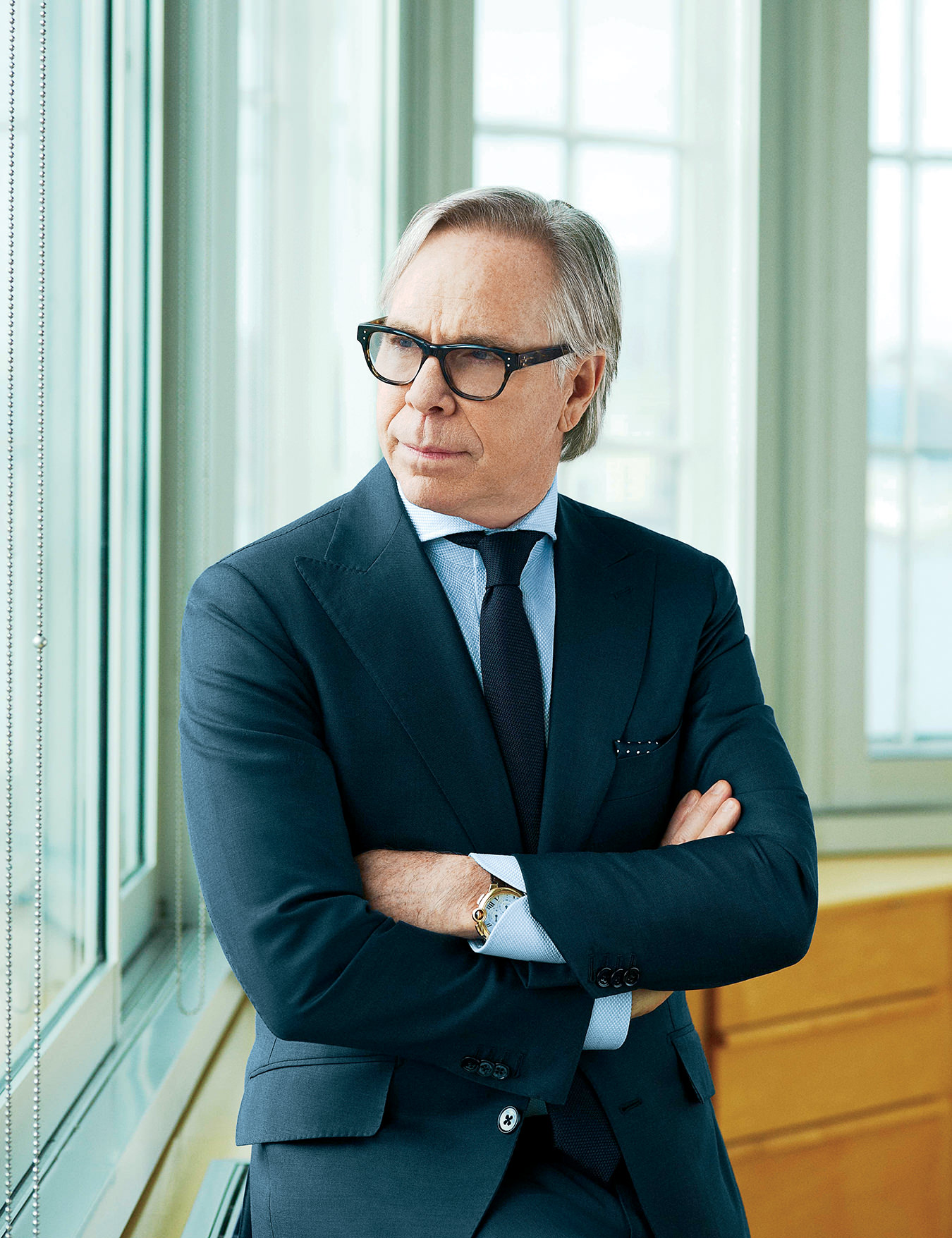
Tommy Hilfiger.
-
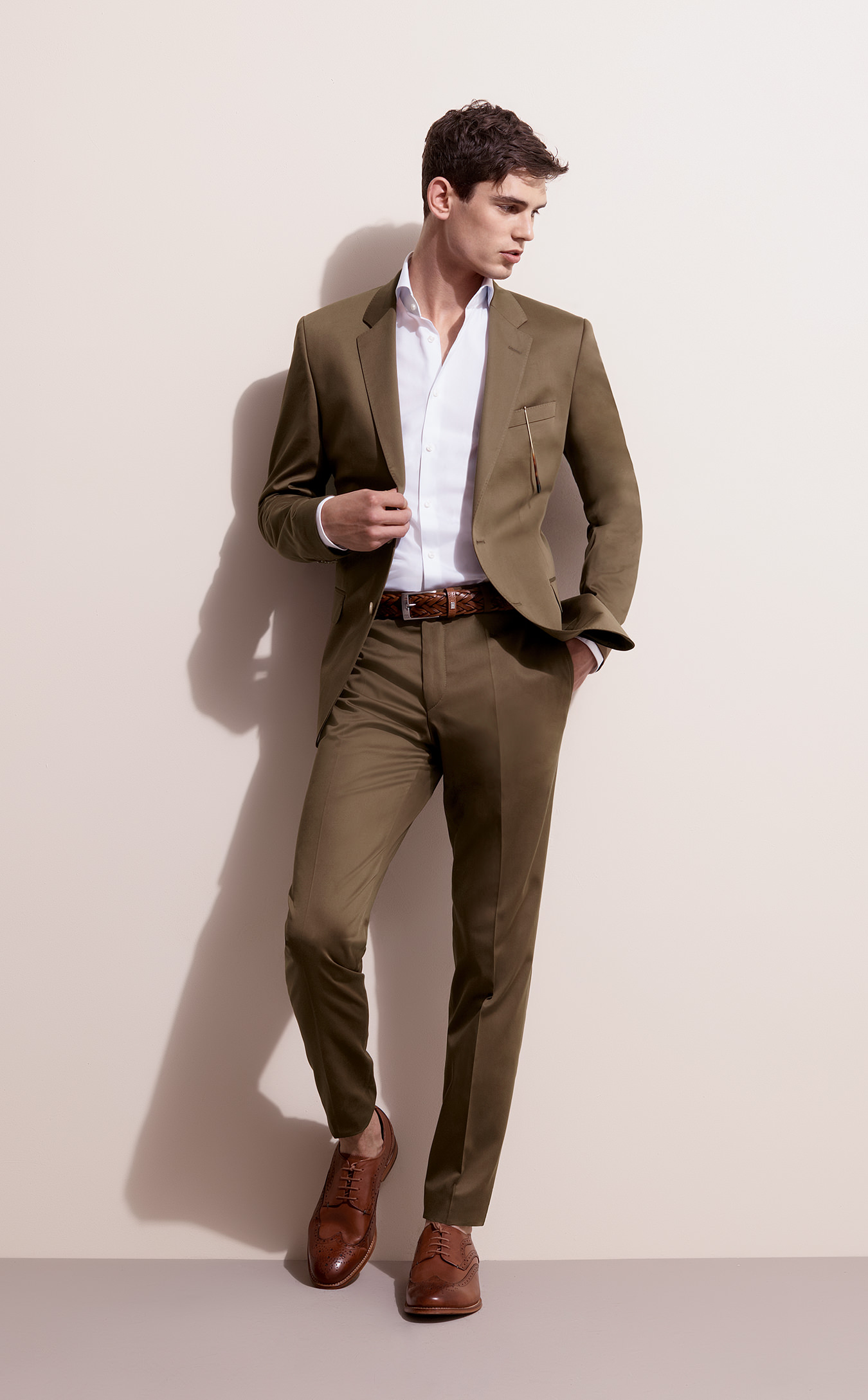
A look from Tommy Hilfiger’s beach-inspired spring/summer 2014 ready-to-wear collection for men.
-
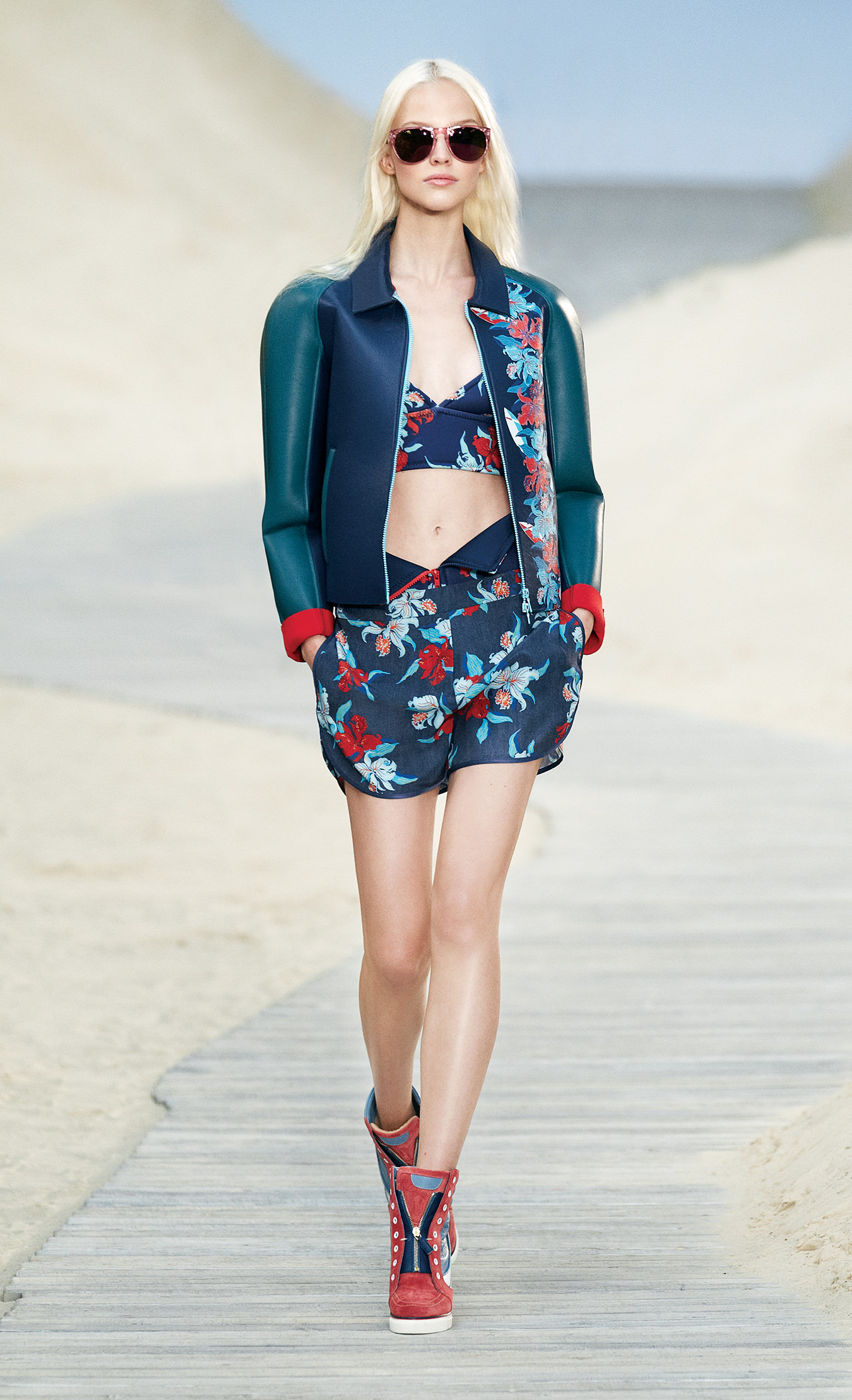
A look from Tommy Hilfiger’s beach-inspired spring/summer 2014 ready-to-wear collection for women.
-
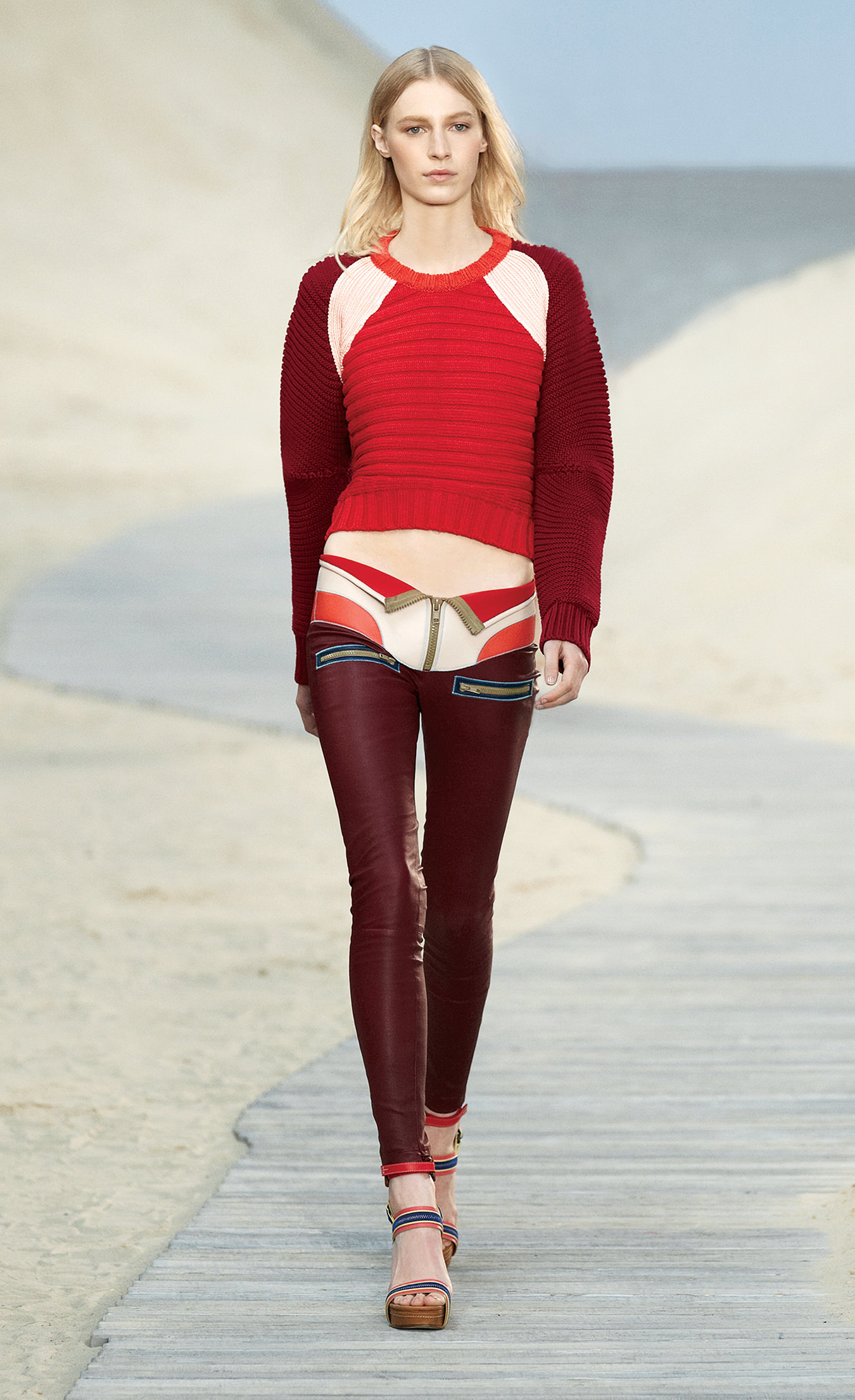
A look from Tommy Hilfiger’s beach-inspired spring/summer 2014 ready-to-wear collection for women.
-
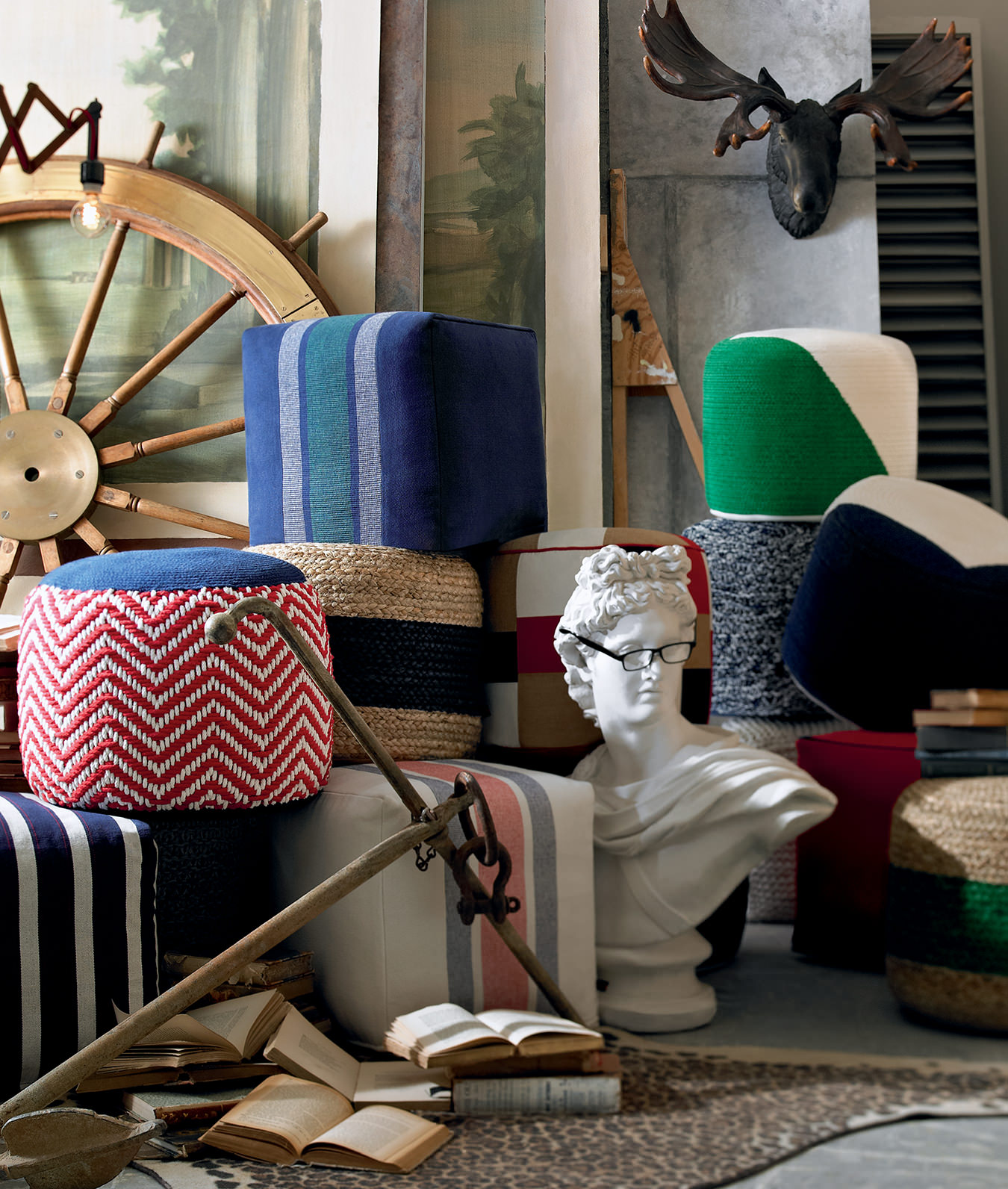
Tommy Hilfiger’s beach-inspired spring/summer 2014 collections include wares for the home.
-
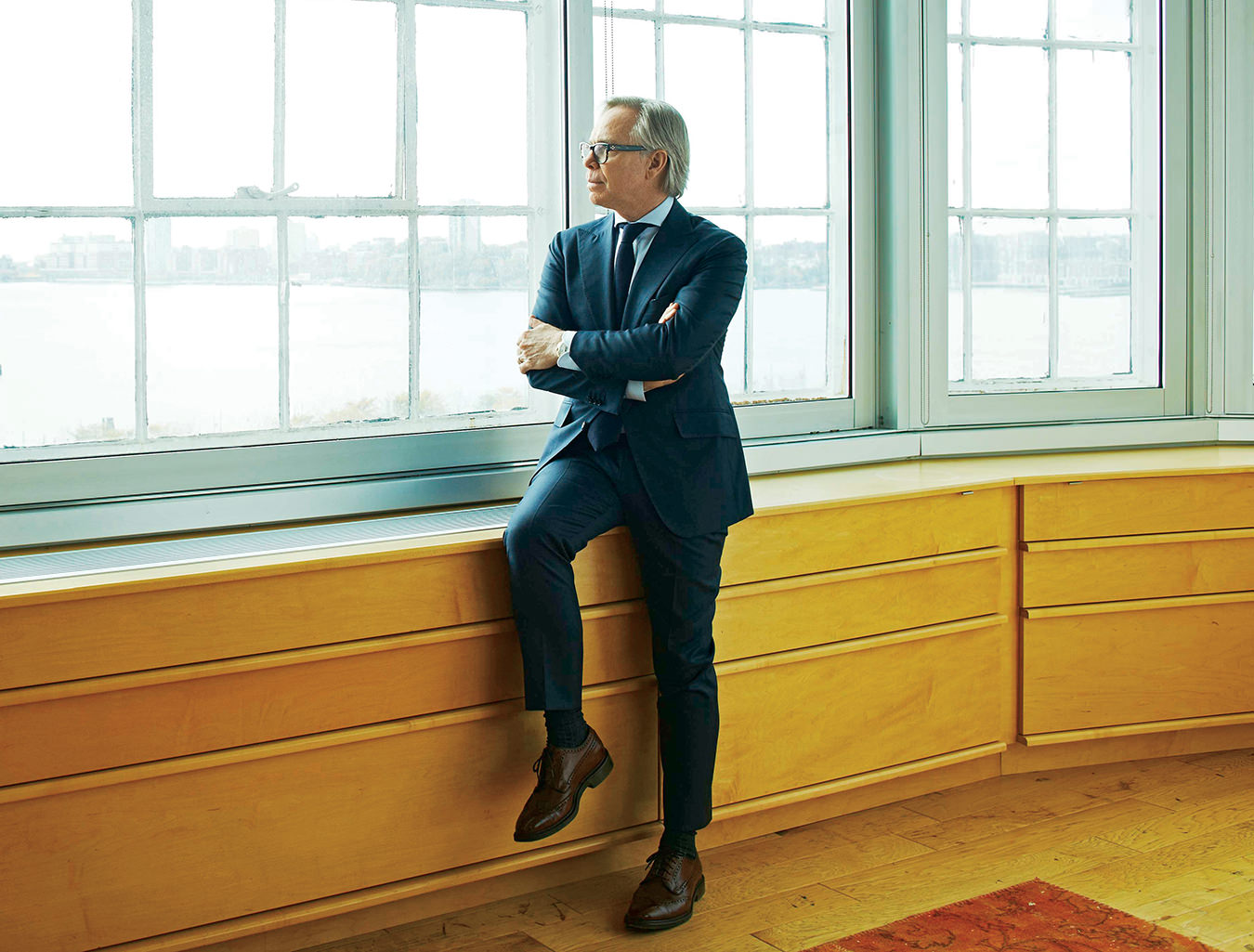
Tommy Hilfiger.
The Evolution of Tommy Hilfiger
King of the hill.

“Why do you do what you do?” Tommy Hilfiger once asked Andy Warhol, to which the artist replied, “Because I like it.”
“He would give one- or two-word answers,” says blue-eyed, boyish-faced Hilfiger, pointing out a silkscreen self-portrait of Warhol on the wall of his office in Chelsea, Manhattan, which overlooks the Hudson River. The light-filled space is decked out with memorabilia, from a pair of Marilyn Monroe’s jeans worn in The Misfits to a photo of Mick and Bianca Jagger’s nuptials. The Tommy Hilfiger brand has certainly evolved over the years, from its bold red, white, and blue, flag-like logo to being a de facto status label of the hip-hop nation to its latest incarnation as a new kind of sporty Americana, but a constant has been the charismatic fashion mogul’s zeal for pop culture. At 62, he is just as hooked as he was as a teen growing up in upstate New York, listening to the Rolling Stones and dreaming of being a part of this intoxicating lifestyle. (He’s also embraced the music world in his campaigns featuring David Bowie and Iman, Lenny Kravitz, and Britney Spears; the brand was even the official sponsor for the Rolling Stones’ No Security Tour in 1999.) “It’s all about pop culture in the world,” he says with earnest enthusiasm. “It’s F-A-M-E—fashion, art, music, and entertainment—that really moves the needle in life.”

A look from Tommy Hilfiger’s beach-inspired spring/summer 2014 ready-to-wear collection for men.
In a classic navy blazer, custom-made Kent & Curwen shirt, dark denims, and brown Church’s English shoes, Hilfiger is sporting his signature preppy aesthetic. “I don’t normally wear a tie, but I have a lunch today with some financial people,” explains the down-to-earth, self-taught designer, who pioneered a modern, colourful spin on all-American sportswear classics such as Oxford shirts, polo knit tops, and chinos. Despite highs and lows along the way, it’s been a winning formula. On the brand’s 25th anniversary in 2010, it sold for $3-billion (U.S.) to clothing conglomerate Phillips-Van Heusen.
Since then, the empire has grown with Hilfiger as the visionary and principal designer. “I oversee and guide the creative, but I have a team of people who do the day-to-day work,” he says. Today there are 1,200 stores worldwide, including 50 in Canada. Global retail sales were a staggering $6-billion in 2012, with the mega-brand encompassing menswear, womenswear, sportswear, eyewear, accessories, homeware, luggage, and fragrance. It’s been a stellar reinvention for Hilfiger, whose brand went from sky’s-the-limit success to losing its lustre when it became overly ubiquitous. “Tommy has been able to come back and reinvent himself, and you have to give him a lot of credit for that,” Vogue editor-in-chief Anna Wintour once said of the man whose mantra is “Never give up.”
When you trace Hilfiger’s journey, it’s been quite a ride. The second of nine children, he did poorly at school, a result of undiagnosed dyslexia. “I couldn’t read really well and I thought I was just dumb, and I think my teachers thought the same,” he says. But he credits this with fuelling his career. “You become a visual person and much more detail-orientated because you look at things differently.” What motivated him to push forward? “Money was scarce, so I took it upon myself to earn my own,” he says, reflecting on his childhood in Elmira, New York. While doing a paper route at age 12, he glimpsed another life for himself. “I would deliver newspapers to people’s homes who were better off than I and would look into their lives and think, ‘Maybe I could live like that someday.’ So I worked hard, saved money, took my jobs very seriously. I thought I could help my family and also maybe eventually have my own home and automobile, be able to take vacations, and have a nice life.” In 1969, at age 18, Hilfiger used $150 of savings to launch a business selling bell-bottom jeans. It grew into a chain of college campus stores called People’s Place, but at 25 he went bankrupt after focusing more on the creative side than the business.

A look from Tommy Hilfiger’s beach-inspired spring/summer 2014 ready-to-wear collection for women.
The same year his first child Ally was born with then-wife Susie in 1985, he launched the Hilfiger label with financial backing from businessman Mohan Murjani. “I hated what was out there from Brooks Brothers and all the others because they were so staid,” says Hilfiger. “I wanted to take that lifestyle, that look, and shake it up.” He rose to fame after the “hangman ad”—a daring Times Square billboard by ad man George Lois that featured Hilfiger’s initials placed alongside those of fashionable greats Calvin Klein, Ralph Lauren, and Perry Ellis. “I found out very quickly that it did cause a lot of controversy,” he says. “I know the other designers were quite upset when I compared myself to them, but it was really in jest and it was sort of a twist on the truth.”
The brand skyrocketed, and in just three years, sales reached $25-million. In 1992, Hilfiger took the company public. “We were one of the only designer brands to be public, and that was a feat,” he says. When Snoop Dogg donned a Tommy-emblazoned rugby shirt on Saturday Night Live in 1994, it sealed the popularity of the brand’s oversized logos and baggy jeans with the hip-hop community.
Sales revenues hit $1.9-billion in 1999, but then momentum started slowing. Hilfiger, the streetwear king of the nineties, was almost a victim of his own success—neither urban nor preppy kids found the brand cool anymore. Meanwhile, in his personal life, he split from Susie after 20 years of marriage. The next few years were a bit of a rollercoaster. The highs included falling in love with former model Dee Ocleppo, whom he met in Saint-Tropez in 2005 and married in 2008. “She was like the perfect all-American girl, with great style,” he says. “Whenever she wears my clothes, I’m very proud.” Their son, Sebastian, arrived in 2009.
Soon after, the brand was bought by Phillips-Van Heusen for nearly seven times what it paid for Calvin Klein. With a return to his preppy roots and a move away from the large logo, Hilfiger had made a comeback. In 2012, the Tommy Hilfiger brand reached $6-billion in global retail sales.
Throughout the ups and downs, his family was everything. “Having my children has been a very important time in my life,” he says. He and Ocleppo have seven children between them (four from his previous marriage, two from hers to Italian tennis pro Gianni Ocleppo, and Sebastian). “It’s balancing all the time,” he says of juggling being a father with running a billion-dollar empire. “When I travel, I often take my family.”
“It’s about California dreaming,” says Hilfiger of the spring/summer 2014 collection, which captures the brand’s reinvigorated spirit by giving a spin to staples such as the polo dress with high-tech fabrics.
The couple split their time between four homes, which Hilfiger describes as Old-World English manor in Connecticut, ultracontemporary in Miami, British colonial on the Caribbean island of Mustique, and plush Plaza penthouse in New York. A fan of buying and selling real estate, he recently put the New York abode on the market for a cool $80-million. “I might sell it if I get the right price. If not, I’ll keep it,” says Hilfiger. “The apartment is great, but it’s like a piece of art. You’re creating a painting, then selling it, and then painting another.”
Hilfiger is an avid art collector; his eye-popping collection includes works by Keith Haring and Richard Prince and a dizzying array of Warhol portraits. “I like trading, buying, and selling pieces,” says Hilfiger. His first splurge was Warhol’s Flowers, and his most treasured is a self-portrait of Jean-Michel Basquiat with Warhol. The savvy businessman is currently running out of wall space and has plans to have an in-home art gallery at his Miami residence.

Tommy Hilfiger’s beach-inspired spring/summer 2014 collections include wares for the home.
With his eldest child, 28-year-old Ally, stepping into the art world as a painter, he’s over the moon. There’s also Rich, 23, a Los Angeles–based musician; Elizabeth, 20, at Rhode Island School of Design; and Kathleen, 18, at boarding school. When Hilfiger speaks, he glows with fatherly pride. “My son [Rich] is developing his own street fashion collection,” he says. Would he rather his children strike out on their own than join the Hilfiger business? “Yes, then they can be in control of their own destiny. Here, there are so many different moving parts.” This doesn’t stop them coming to him for advice. “Sometimes it’s tempting to say, ‘I’ll make that call for you,’ but I want to teach them to be independent while allowing them to know that I’m behind them.”
Hilfiger values his family’s input on his collections; his spring/summer 2014 show got the seal of approval from Ally and Elizabeth, who sat front row. “The surfing lifestyle was the inspiration,” he says of the collection that captures the brand’s reinvigorated spirit by giving a spin to staples such as the polo dress with high-tech fabrics. “It’s about California dreaming, the beaches, Malibu, Santa Monica, modern, young, sexy. I think this spring 2014 collection was their [Ally and Elizabeth’s] favourite because it’s more in keeping with what they like and who they are. They offer opinions, always.” That said, they’re not as likely to screen his personal wardrobe. “There were times when they said, ‘Dad. You’re not going to wear that, are you?’ he says, laughing. “Not so much anymore.”
How would he describe his own style? “I love navy blue,” he says, adjusting his Tommy Hilfiger glasses. “I wear blue shirts, blue jeans, navy blue blazers, navy blue sweaters. I have a very tight repertoire with clothing.” Ocleppo, on the other hand, is an accessories aficionado, and has been developing her own high-end handbag line called Dee Ocleppo.
When the two first met, they felt a powerful bond, as they each have a child with autism. “I saw the way she was with her son [Alex], who is on the spectrum, and she was full of compassion,” he says of his wife. Hilfiger’s daughter, Kathleen, is also on the autism spectrum, and Hilfiger and Ocleppo are devoted to raising awareness and funds for research through their positions on the board of the Autism Speaks organization. “We are putting our lives into it. We believe it’s very important because there’s no pill, no cure, no reason—we don’t know why children are born with it,” he says. “The more we research, the closer we are to finding a cure.”

Generally speaking, what drives Hilfiger today? “The challenge of doing something I’ve never done before,” he says. “I’ve always liked to achieve more than I did yesterday.” He admits that his secret to success is surrounding himself “with very, very smart people,” both in terms of his peers and in the workplace. “I was always reaching for people who are much more talented than I,” says Hilfiger, who received the Council of Fashion Designers of America Geoffrey Beene Lifetime Achievement Award in 2012. “I’ve been very lucky.” Along with a little luck he also believes that “you need drive, hard work and vision.”
It’s a good thing that Hilfiger is up for a challenge; the industry has changed dramatically since he started out, not only with the digital age but with fierce competition. “There were no H&Ms, no Zaras, no Uniqlos, and now they’re all over,” he says. “Designer brands were not global—now they are. There was not this strong desire for luxury brands.” Despite this, the fashion giant is growing worldwide, especially in emerging markets such as China, India, Russia, and Brazil. “I see [the brand] continuing to evolve and upgrade, because there is a desire for more sophisticated, more luxurious fabrications, even if it costs somewhat more,” says Hilfiger. “Our collection from the runway was really limited before, but now it’s expanding.”
In addition to leading a global brand, being a dad to seven kids, collecting art, and trading in real estate, Hilfiger invests with his brother Andy in fashion companies, which are separate from the Tommy Hilfiger Group. Does he ever feel overwhelmed by the magnitude of everything? “Not really, because I sort of compartmentalize it and say, ‘Okay, this is my personal life, this is the business life, this is my creative life,’” he says. His worlds do sometimes collide when he gets mistaken for another American designer, however. “Now that my hair has gone grey, some people ask, ‘Are you Ralph Lauren?’” he says, laughing. Does he mind? “It doesn’t matter,” he shrugs, laughing.
By doing what he likes, as did his artist friend Warhol, Hilfiger has carved out own his slice of pop culture. “Growing up, I would daydream a lot and picture myself in different instances or situations, and eventually building that life for myself,” he says of his childhood reveries. “It’s still a journey every day.” But if anyone thinks he is going to slow down anytime soon, they’re wrong. When asked how long he will continue, Hilfiger replies, “Forever.”
Collection photos provided by Tommy Hilfiger.




